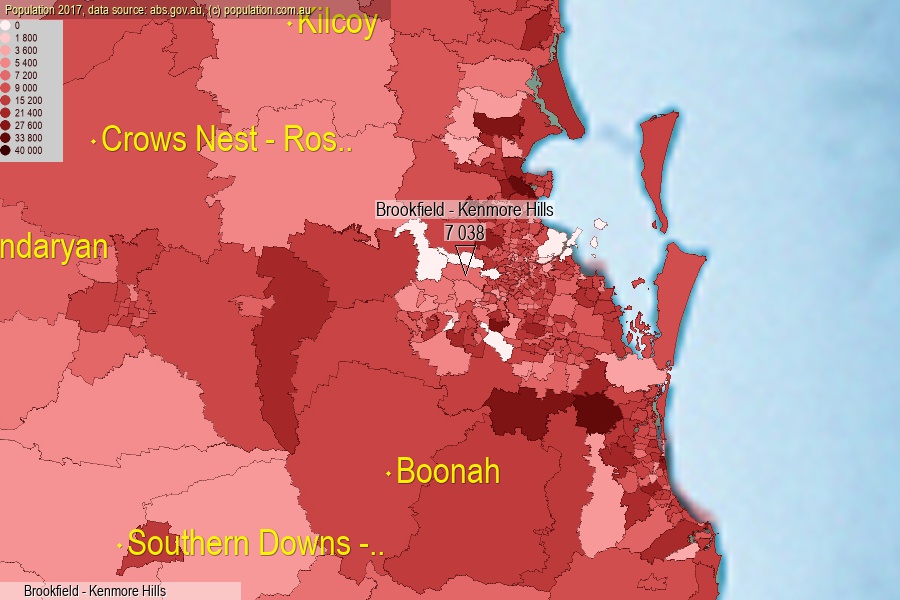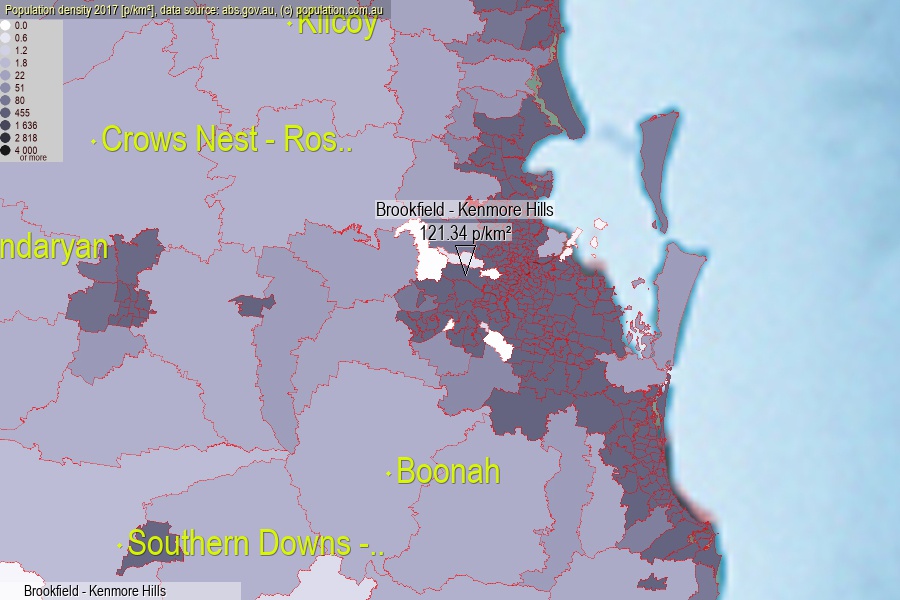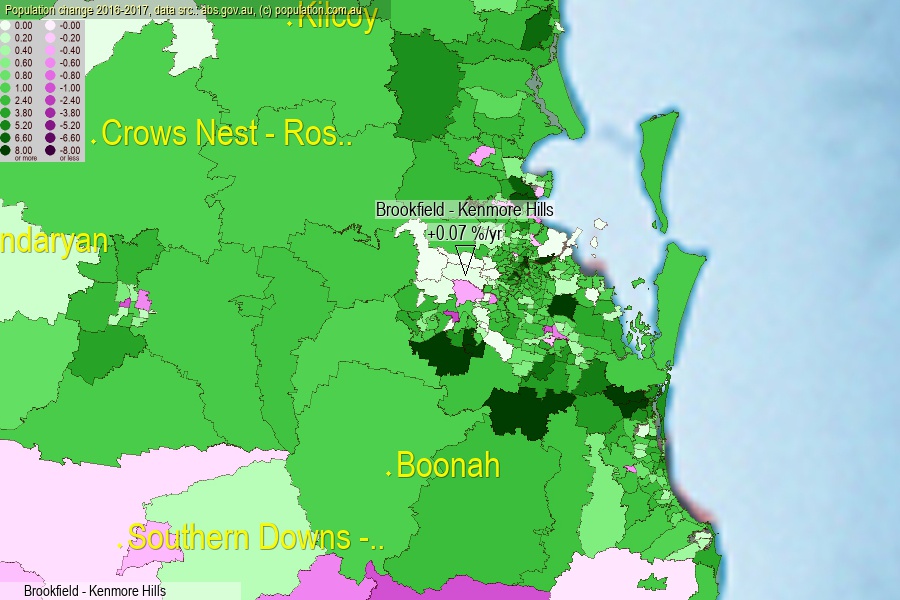 population.com.au
population.com.auLast official estimated population of Brookfield - Kenmore Hills (as Statistical Area Level 2) was 7 038 people (on 2017-06-30)[2]. This was 0.03% of total Australian population and 0.141% of QLD population. Area of Brookfield - Kenmore Hills is 58.00 km², in this year population density was 121.34 p/km² . If population growth rate would be same as in period 2016-2017 (+0.07%/yr), Brookfield - Kenmore Hills population in 2025 would be 7 078. [0]



Click to enlarge. Brookfield - Kenmore Hills is located in the center of the images.
Population [people], population density [p./km²] and population change [%/year] [2]
View borders » (new window) [4]
[1991-1992] +4.66 %/Yr.
[1992-1993] +6.61 %/Yr.
[1993-1994] +4.47 %/Yr.
[1994-1995] +4.92 %/Yr.
[1995-1996] +5.09 %/Yr.
[1996-1997] +5.55 %/Yr.
[1997-1998] +3.95 %/Yr.
[1998-1999] +3.32 %/Yr.
[1999-2000] +3.49 %/Yr.
[2000-2001] +3.35 %/Yr.
[2001-2002] +3.32 %/Yr.
[2002-2003] +1.17 %/Yr.
[2003-2004] +0.67 %/Yr.
[2004-2005] +0.99 %/Yr.
[2005-2006] +0.58 %/Yr.
[2006-2007] +0.01 %/Yr.
[2007-2008] +0.14 %/Yr.
[2008-2009] +0.53 %/Yr.
[2009-2010] +0.24 %/Yr.
[2010-2011] -0.18 %/Yr.
[2011-2012] -0.06 %/Yr.
[2012-2013] -1.01 %/Yr.
[2013-2014] -0.36 %/Yr.
[2014-2015] -0.23 %/Yr.
[2015-2016] -0.69 %/Yr.
[2016-2017] +0.07 %/Yr.
[0] Calculated with linear interpolation from officially estimated population
[1] Read more about SA2 and Australian Statistical Geography Standard (ASGS) on abs.gov.au
[2] Population data from Australian Bureau of Statistics (Population and density: 2017; change: 2016-2017)
[3] Digital Boundaries: Australian Statistical Geography Standard (ASGS) 2016.
[4] Border coordinates are simplifyed using Ramer-Douglas-Peucker algorithm.